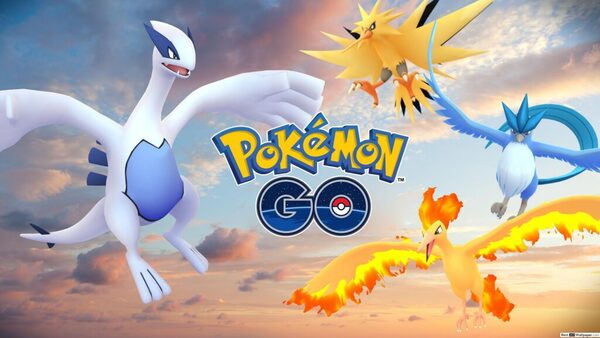Advertisement
Popular Now
Introduction
Since its release in 2016, Pokémon Go has transformed the way fans interact with the beloved Pokémon universe. This augmented reality (AR) game encourages players to explore the real world, catch Pokémon, and engage with a vibrant community. Whether you’re a seasoned trainer or a newcomer, understanding the game's mechanics can enhance your experience and help you succeed. In this guide, we’ll explore essential strategies and tips to master Pokémon Go, from catching Pokémon to participating in raids, community days, and beyond.
Understanding the Basics of Pokémon Go
What is Pokémon Go?
Pokémon Go is an AR mobile game developed by Niantic, allowing players to catch Pokémon in real-world locations. Utilizing GPS, the game overlays Pokémon onto the physical world, creating an immersive experience that encourages exploration and physical activity. Players can find, catch, and evolve Pokémon, battle in gyms, and participate in various events.How to Get Started
To start your journey in Pokémon Go, follow these steps:- Download the App: Pokémon Go is available on both Android and iOS platforms. Download it from the Google Play Store or Apple App Store.
- Create an Account: You can sign up using your Google account, Facebook, or Pokémon Trainer Club account.
- Customize Your Avatar: Personalize your in-game character to reflect your style.
- Choose Your First Pokémon: You’ll begin your adventure by selecting one of three starter Pokémon: Bulbasaur, Charmander, or Squirtle.
Catching Pokémon Effectively
Understanding Pokémon Types
Pokémon are categorized into various types (e.g., Fire, Water, Grass), each with strengths and weaknesses. Familiarizing yourself with these types will help you choose effective strategies when battling and catching Pokémon.Using Poké Balls
The primary tool for catching Pokémon is the Poké Ball. Here’s how to use them effectively:- Throwing Techniques:
- Basic Throw: Tap the Poké Ball and swipe it towards the Pokémon.
- Curveball: Spin the Poké Ball before throwing for a higher catch rate.
- Excellent Throws: Aim for the colored circle when it’s at its smallest for bonus catches.
- Different Poké Balls:
- Great Balls: More effective than regular Poké Balls.
- Ultra Balls: Best for capturing high-level Pokémon.
- Special Balls: Such as Premier Balls during special events or raids.
Exploring Your Surroundings

Finding Pokémon Locations
Pokémon appear in different environments, and knowing where to look can significantly boost your catching success. Here are some tips:- Natural Habitats: Water-type Pokémon are often found near bodies of water, while Grass-types can be found in parks and forests.
- Time of Day: Some Pokémon are more common at night or during specific weather conditions.
- Pokémon Radar: Utilize the Nearby feature in the game to track Pokémon sightings and find them quickly.
Engaging with PokéStops and Gyms
PokéStops and Gyms are vital for acquiring items and battling:- PokéStops: These are typically located at landmarks like parks, churches, and public buildings. Spin the Photo Disc at PokéStops to receive Poké Balls, potions, and other items.
- Gyms: These are locations where players can battle Pokémon. Once you reach Level 5, you can participate in Gym battles and train your Pokémon.
Leveling Up Your Trainer
Gaining Experience Points (XP)
Leveling up is essential for accessing new features and stronger Pokémon. Here are some ways to gain XP:- Catching Pokémon: Each catch gives you XP, with bonuses for using higher-quality Poké Balls.
- Completing Research Tasks: Participate in daily and special research tasks for significant XP rewards.
- Hatching Eggs: Incubating and hatching Pokémon eggs grants XP.
Understanding Levels and Rewards
As you level up, you’ll unlock various rewards:- New Items: Higher levels grant access to better items and Poké Balls.
- Increased Catch Rates: Higher-level trainers have a better chance of catching rare Pokémon.
Participating in Raids

What are Raids?
Raids are cooperative battles against powerful Pokémon, known as Raid Bosses. They offer a chance to catch rare Pokémon and obtain valuable items.How to Prepare for a Raid
- Join a Raid Group: Coordinate with friends or local players to tackle difficult raids together.
- Select Your Pokémon: Choose Pokémon with type advantages against the Raid Boss.
- Use Potions and Revives: Ensure your Pokémon are healed and ready for battle.
Engaging in Trainer Battles
Types of Battles
Trainer battles can take place in various formats:- Great League: A battle format where Pokémon must have a CP of 1500 or less.
- Ultra League: Similar to Great League but with a CP cap of 2500.
- Master League: No CP limit, allowing the use of your strongest Pokémon.
Battle Strategies
- Choose the Right Pokémon: Utilize type advantages and high CP Pokémon.
- Use Charge Moves Wisely: Save your Charge Moves for critical moments to turn the tide in battles.
- Dodge Attacks: Timing your dodges can help reduce damage taken from opponents.
Participating in Community Days
What is Community Day?
Community Day is a monthly event that highlights a specific Pokémon, offering increased spawn rates and bonuses.How to Make the Most of Community Days
- Plan Ahead: Know the date and time of the event and prepare accordingly.
- Team Up: Join local players to maximize your chances of catching the featured Pokémon.
- Utilize Incense and Lures: Enhance your catching opportunities by using these items during the event.
Utilizing Events and Special Features
Seasonal Events
Niantic frequently hosts seasonal events that introduce unique Pokémon and limited-time tasks. Stay updated by checking the game’s announcements or following Pokémon Go communities.Special Features to Explore
- Pokémon Home Integration: Connect your Pokémon Go account to Pokémon Home for transferring and managing your Pokémon.
- AR Features: Explore AR mode for an immersive catching experience.
Building a Strong Pokémon Collection
Catching Strategies
- Focus on Rarity: Prioritize catching rare Pokémon to enhance your collection.
- Evolve Strategically: Evolve Pokémon only when necessary to save resources.















